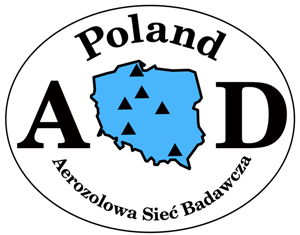Radiative Transfer Laboratory at the Institute of Geophysics, Physics Department of the University of Warsaw
|
The main goal of the research carried out in the Radiative Transfer Laboratory (RTL) is to study optical properties of atmospheric aerosols and clouds and to determine the radiation and energy balances at the ground level via the analyses of radiation transfer in the atmosphere. The studies are made using both the remote sensing and in situ techniques. Remote techniques allow for detection of aerosols transported in entire troposphere. Saharan dust, often observed in spring is an example of such aerosols. Other examples involve volcanic ash, which was observed over Poland in April 2010, or aerosols produced as a result of forest fires, which are most commonly observed over Poland in late summer. The RTL was established during an international study campaign SAWA (SAharan dust over WArsaw) which took place in 2005. The laboratory has been developed since then. In 2011-2012 a significant development of the RTL took place as a result of a purchase of a number of instruments from the Fund of the Polish Science and Technology. The RTL includes a measurement platform on the roof of the Institute of Geophysics building and several office/laboratory facilities.
|


